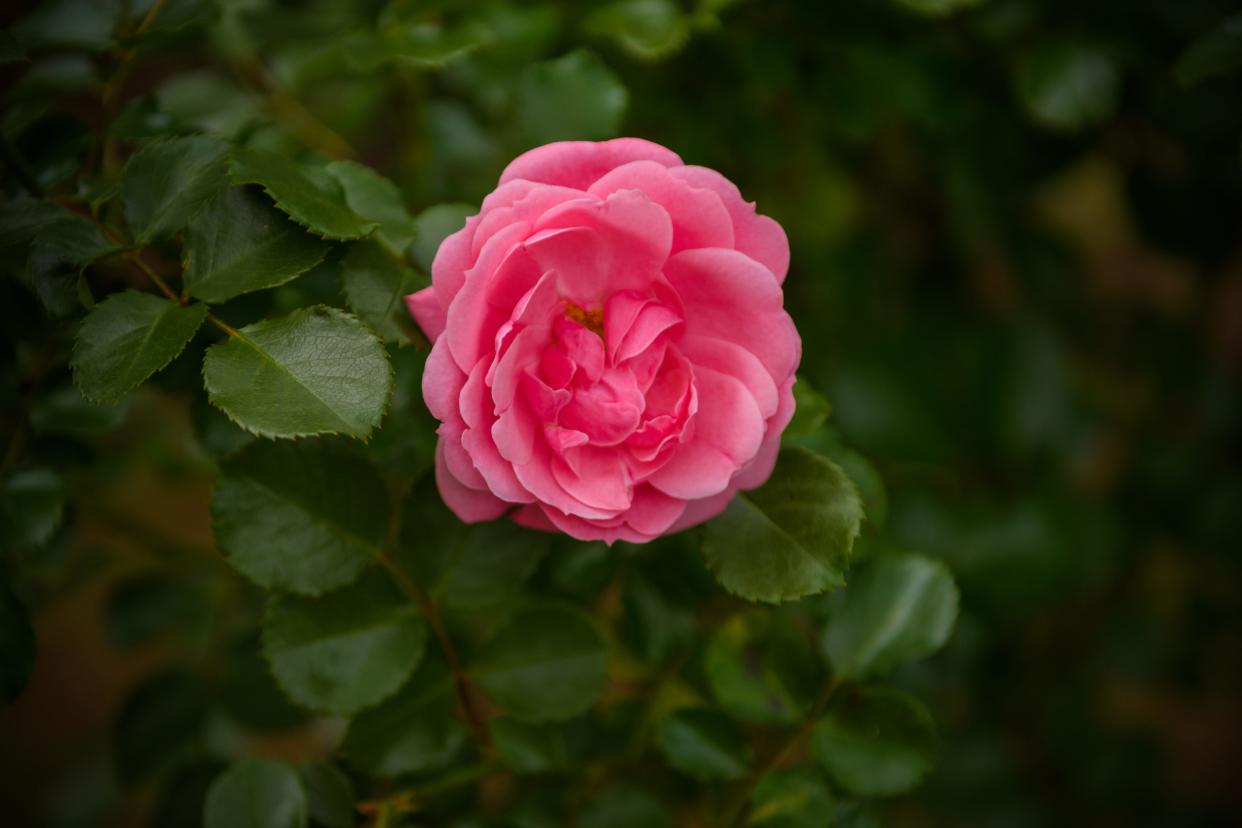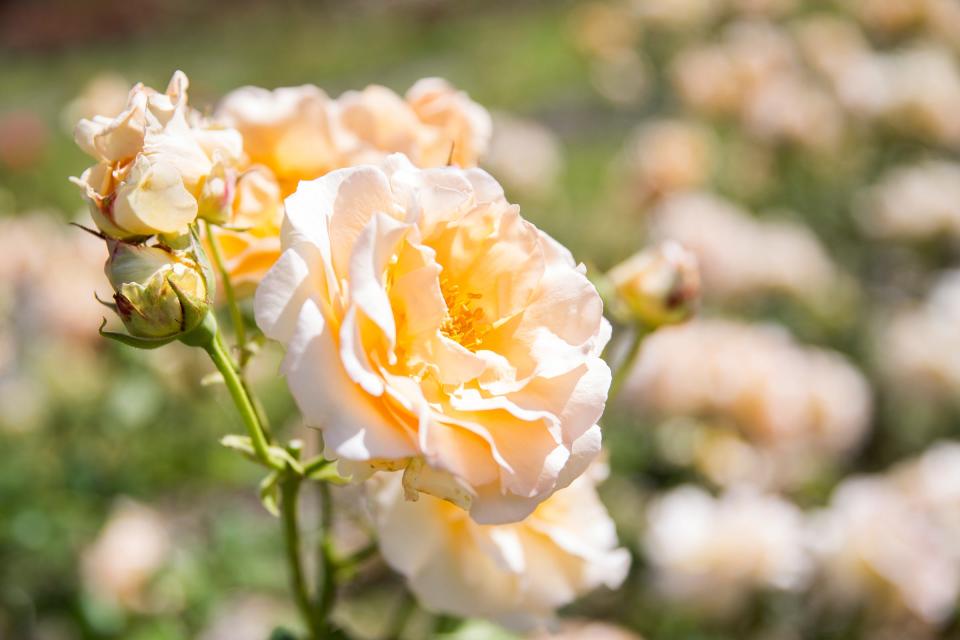Pruning time for roses in Central Valley: What to know for bigger blooms, longer stems

I just finished pruning my roses after starting to prune them between our unusually wet winter storms. I only have about 38 roses now, so the chore is manageable; although there is quite a variety planted by the previous owner. At my old home I had about 105 roses; three climbers, nine Hybrid Perpetuals, two polyanthas and the rest were hybrid teas, grandifloras and floribundas. It was always a big chore to prune all my roses. Some years I had helpers as the San Joaquin County Master Gardeners would come for Pruning Day Training at Lee’s place. They got to prune roses, grapes and view demonstrated pruning of fruit trees and kiwis.
Here are some of my tips on pruning roses. Roses require some serious pruning and some new gardeners may be intimidated by rose pruning and fearful of harming the rose by pruning. I can assure you that it would be difficult to kill a rose by pruning. We can start pruning roses after New Year’s Day and we should usually finish by about mid-February to March 1 before they start to leaf out. You will want to use long lopping bypass pruners, hand pruners and leather gauntlet gloves are best to protect your arms from those sharp pesky rose prickles. A pruning saw may be required to remove large older canes on older roses.
What we want to achieve in pruning hybrid tea rose or grandifloras is create a vase-shaped bush about 12 to 18 inches tall with 4-6 canes. About 6-8 canes is best for a floribunda rose. The shorter you prune the canes, the bigger the flower and the longer the stems. Leave canes a little taller and this will produce more blooms, although smaller ones on shorter stems. If the rose is not very vigorous fewer canes can be left which may stimulate new canes to grow.

To see better the rose structure, it is good to prune off the twiggy upper third of the rose. This will get this material out of the way so that the basic structure can be observed and dealt with. The vase shape can be encouraged by pruning a cane to about 3/8 inches above a budeye that is facing away from the center. This cut is recommended to be made at a 45 degrees angle, but in my experience a flat cut is just as good.
It is important to check out the color of the pith in the cane. It should be white. If it is brown black or discolored, cut lower on the cane until the pith is white. Take out any diseased, dead or crossing canes or very old non-vigorous canes and select younger healthy vigorous canes for replacement. Spindly canes, ¼ inch in diameter, should also be removed.
It is important to take out suckers that grow from the rootstock on grafted roses. These suckers will tend to take over if not removed. They are best removed by pulling them off with a downward jerking motion if possible, but this often is not easy to do. Otherwise cut them off as close as possible to the rootstock. If buds are left on the sucker remnant it will come back and that is why pulling them off will best eliminate these buds. For more information on pruning hybrid tea roses see: https://ucanr.edu/sites/mgslo/files/272360.pdf
Floribundas, polyanthas, shrub roses and minifloras and miniatures can generally be cut back by about a third or quarter of the height of the plant and fewer canes and growth can be removed than on the hybrid tea roses and grandifloras. All the canes on the bush do not have to be cut at the same height. Younger plants should be pruned very lightly.
Pruning debris and rose leaves should be removed to help control diseases. Cleaning up the bud union area where the canes originate is desirable to encourage new canes to emerge. Mulching the roses with wood chips or bark will help conserve water after cleanup.
Old garden roses which are once-blooming: Alba, Gallica, Centofolia, Damask and Moss produce flowers on old wood. Hence all pruning should be delayed until after flowering and pruning should be very light on these roses taking out dead or thin wood. These roses are rare in most gardens.
Climbing roses are also pruned at this time of year and for more information google the subject or go here: https://www.gardendesign.com/roses/pruning-climbing.html . Happy rose pruning and use gloves to avoid those prickles.
If you have a gardening-related question you can contact the UC Master Gardeners at 209-953-6112. More information can be found on our website: http://sjmas tergardeners.ucanr.edu/CONTACT_US/.
This article originally appeared on The Record: Rose pruning tips for bigger blooms, longer stems in Central Valley

